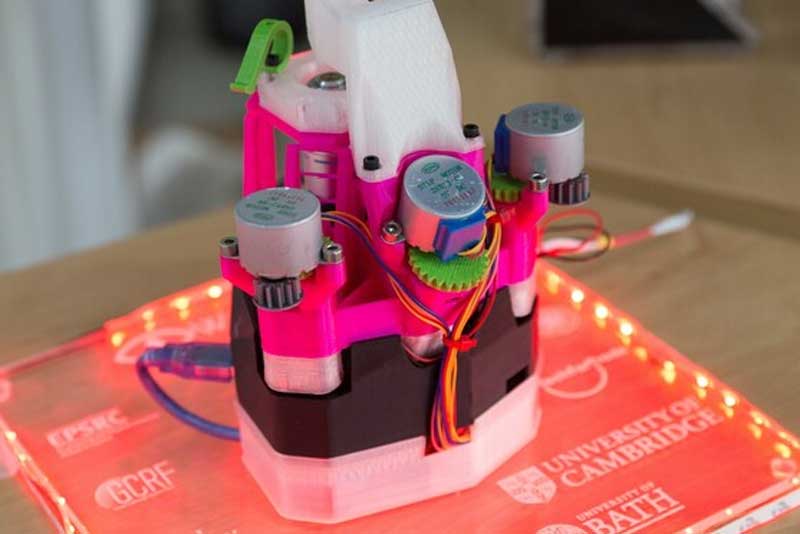3D printing isn’t something you would usually associate with a high precision device, but this one shows that it can be used to create rather intricate things when needed. The Openflexure is a microscope stage that offers a mechanical stage that can be maneuvered precisely. The optics can be swapped out so it uses anything from a webcam to a very high-powered 100x magnification lens, but still move the stage smoothly and precisely. It can be driven by turning a knob or by three small motors. The plan is that the motors will eventually be driven by the software that is being written for the device.
The project is still in the early stages, but it looks promising so far and is being led by Richard Bowman at the University of Bath, a prize fellow in the department of physics. As such, it is no surprise that it is aimed at the needs of academia, but it would also be very adaptable for anyone who was looking for a precise way to maneuver small objects in three dimensions.
[Thanks for the tip, Robert Nixdorf]















Interesting topic…Anyway Thanks for sharing.
Very impressive!!
This looks like a great project. The paper and other docs do not have much info. Flexures are great for this application. Must print I guess.
Yeah, I had to give it a print this weekend to see exactly how it works. Seems like they’re on the verge of a new release so the docs aren’t quite up to date with the latest files – but the changes are fairly easy to figure out (little things like adding nuts and nut traps in place of a few spots that had just been threaded into the plastic.) Oh and the latest design seems to take a lot longer to print than the docs imply (they quote about 5 hours on a Prusa Mk3 at 0.30 layer height for the main body…but it was 10 hours on mine at 0.20, all told with the optional base I was right about 20 hours of printing total) Waiting on a new pi cam that should be here tomorrow before I can finish it.
Neat. I want to try it. I have some HD cameras that will work and a bunch of Leitz objectives including oil-immersion. I don’t know anything about state-of-the-art but have some really nice scopes from the 1950’s that were used to study tracks in emulsion plates from balloon flights. I hope these old objectives are pretty good.
Interesting… thinking about for flow cytometry and other apps with auto-calibrating and other functions.
I get a “page not Fond” error for the link to the page of Richard Bowman on Bath university.
Same here – but I found him. Richard moved to the University of Glasgow in 2022. And his Git for the microscope is very alive….